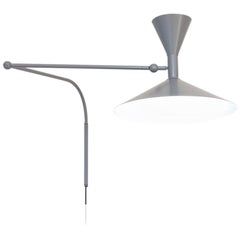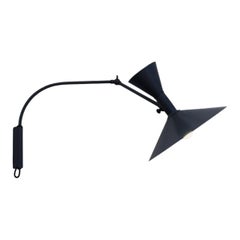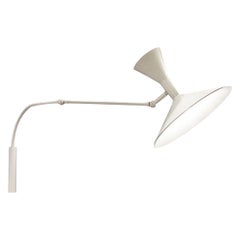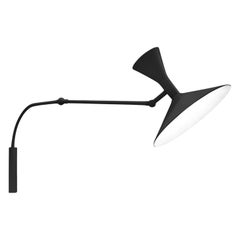Mini Lampe De Marseille
2010s French Mid-Century Modern Wall Lights and Sconces
Aluminum
21st Century and Contemporary Italian Mid-Century Modern Wall Lights and...
Aluminum, Steel
21st Century and Contemporary Italian Mid-Century Modern Wall Lights and...
Aluminum, Steel
21st Century and Contemporary Italian Mid-Century Modern Wall Lights and...
Aluminum, Steel
People Also Browsed
21st Century and Contemporary Japanese Mid-Century Modern Chandeliers an...
Metal
2010s American Mid-Century Modern Wall Lights and Sconces
Brass, Nickel, Enamel, Bronze
21st Century and Contemporary Italian Mid-Century Modern Wall Lights and...
Brass
21st Century and Contemporary Italian Mid-Century Modern Wall Lights and...
Brass, Metal
21st Century and Contemporary American Scandinavian Modern Wall Lights a...
Brass
21st Century and Contemporary American Bohemian Chandeliers and Pendants
Brass
Vintage 1950s German Mid-Century Modern Stools
Metal
21st Century and Contemporary Italian Mid-Century Modern Wall Lights and...
Brass, Aluminum, Metal
2010s American Mid-Century Modern Wall Lights and Sconces
Brass
2010s American Mid-Century Modern Wall Lights and Sconces
Nickel, Chrome, Enamel, Bronze, Brass
2010s American Mid-Century Modern Wall Lights and Sconces
Nickel, Enamel, Bronze, Brass
2010s American Mid-Century Modern Wall Lights and Sconces
Nickel, Enamel, Bronze, Brass
21st Century and Contemporary Italian Art Deco Wall Lights and Sconces
Brass
21st Century and Contemporary American Scandinavian Modern Wall Lights a...
Copper
2010s South African Minimalist Pedestals
Wood
21st Century and Contemporary American Scandinavian Modern Wall Lights a...
Nickel, Brass
Le Corbusier for sale on 1stDibs
Swiss-born Charles-Édouard Jeanneret, best known by his adopted name Le Corbusier, was a highly influential architect, designer, painter, urban planner and writer whose career spanned almost five decades. His designs for sofas, chairs and other furniture are spare, minimal and efficient but at the same time offer supreme comfort.
A pioneer of progress-minded modern architecture, Le Corbusier sought to impose a rational order on the chaos of the world through design. He rejected the excessive architectural ornament and developed a style that became known as brutalism, creating buildings with elemental geometric forms that were made of industrial materials such as steel and reinforced concrete.
Le Corbusier believed that pure, well-designed spaces could offer a lesson in how little is needed to achieve happiness. To convey this notion, the architect prioritized modern, open interiors and emphasized light, rational designs. His architecture and interiors share a clear sense of space and structural order, underlining the beauty in harmony, proportion and simplicity.
Le Corbusier’s furniture espouses these same ideals. Collaborating with his cousin, Pierre Jeanneret, and trailblazing designer Charlotte Perriand, he devised such iconic pieces as the LC2 Petit Confort armchair and the LC4 chaise longue. Each couples a tubular chrome frame with soft, supple leather upholstery, lending an organic warmth to an industrially made design. In his furniture, Le Corbusier broke new ground in ergonomics.
The shape of the LC4 chaise is taken directly from the human form; the classic cowhide upholstery makes the sitter feel weightless; and the piece features an adjustable positioning mechanism to promote total relaxation. Bereft of ornament and prized for its functionality, the LC series created by Le Corbusier, Perriand, and Pierre is currently manufactured by Cassina.
Such planning and intelligence were the hallmarks of Le Corbusier’s career. Whether in his designs for private residences such as the Villa Savoye near Paris, apartment towers like the Unité D'habitation in Marseilles, or in his furniture, he worked toward a style of living that was expansive and flexible. The strength and simplicity of line of Le Corbusier’s sofas, chaise longues and other seating pieces give them a sculptural presence in any décor, yet they are sublimely restful. And as you will see on 1stDibs, Le Corbusier’s furniture reflects a worldly taste: it is at once refined, cosmopolitan and chic.
Find a collection of vintage Le Corbusier furniture for sale on 1stDibs.
A Close Look at Mid-century-modern Furniture
Organically shaped, clean-lined and elegantly simple are three terms that well describe vintage mid-century modern furniture. The style, which emerged primarily in the years following World War II, is characterized by pieces that were conceived and made in an energetic, optimistic spirit by creators who believed that good design was an essential part of good living.
ORIGINS OF MID-CENTURY MODERN FURNITURE DESIGN
- Emerged during the mid-20th century
- Informed by European modernism, Bauhaus, International style, Scandinavian modernism and Frank Lloyd Wright’s architecture
- A heyday of innovation in postwar America
- Experimentation with new ideas, new materials and new forms flourished in Scandinavia, Italy, the former Czechoslovakia and elsewhere in Europe
CHARACTERISTICS OF MID-CENTURY MODERN FURNITURE DESIGN
- Simplicity, organic forms, clean lines
- A blend of neutral and bold Pop art colors
- Use of natural and man-made materials — alluring woods such as teak, rosewood and oak; steel, fiberglass and molded plywood
- Light-filled spaces with colorful upholstery
- Glass walls and an emphasis on the outdoors
- Promotion of functionality
MID-CENTURY MODERN FURNITURE DESIGNERS TO KNOW
- Charles and Ray Eames
- Eero Saarinen
- Milo Baughman
- Florence Knoll
- Harry Bertoia
- Isamu Noguchi
- George Nelson
- Danish modernists Hans Wegner and Arne Jacobsen, whose emphasis on natural materials and craftsmanship influenced American designers and vice versa
ICONIC MID-CENTURY MODERN FURNITURE DESIGNS
- Eames lounge chair
- Nelson daybed
- Florence Knoll sofa
- Egg chair
- Womb chair
- Noguchi coffee table
- Barcelona chair
VINTAGE MID-CENTURY MODERN FURNITURE ON 1STDIBS
The mid-century modern era saw leagues of postwar American architects and designers animated by new ideas and new technology. The lean, functionalist International-style architecture of Le Corbusier and Bauhaus eminences Ludwig Mies van der Rohe and Walter Gropius had been promoted in the United States during the 1930s by Philip Johnson and others. New building techniques, such as “post-and-beam” construction, allowed the International-style schemes to be realized on a small scale in open-plan houses with long walls of glass.
Materials developed for wartime use became available for domestic goods and were incorporated into mid-century modern furniture designs. Charles and Ray Eames and Eero Saarinen, who had experimented extensively with molded plywood, eagerly embraced fiberglass for pieces such as the La Chaise and the Womb chair, respectively.
Architect, writer and designer George Nelson created with his team shades for the Bubble lamp using a new translucent polymer skin and, as design director at Herman Miller, recruited the Eameses, Alexander Girard and others for projects at the legendary Michigan furniture manufacturer.
Harry Bertoia and Isamu Noguchi devised chairs and tables built of wire mesh and wire struts. Materials were repurposed too: The Danish-born designer Jens Risom created a line of chairs using surplus parachute straps for webbed seats and backrests.
The Risom lounge chair was among the first pieces of furniture commissioned and produced by celebrated manufacturer Knoll, a chief influencer in the rise of modern design in the United States, thanks to the work of Florence Knoll, the pioneering architect and designer who made the firm a leader in its field. The seating that Knoll created for office spaces — as well as pieces designed by Florence initially for commercial clients — soon became desirable for the home.
As the demand for casual, uncluttered furnishings grew, more mid-century furniture designers caught the spirit.
Classically oriented creators such as Edward Wormley, house designer for Dunbar Inc., offered such pieces as the sinuous Listen to Me chaise; the British expatriate T.H. Robsjohn-Gibbings switched gears, creating items such as the tiered, biomorphic Mesa table. There were Young Turks such as Paul McCobb, who designed holistic groups of sleek, blond wood furniture, and Milo Baughman, who espoused a West Coast aesthetic in minimalist teak dining tables and lushly upholstered chairs and sofas with angular steel frames.
Generations turn over, and mid-century modern remains arguably the most popular style going. As the collection of vintage mid-century modern chairs, dressers, coffee tables and other furniture for the living room, dining room, bedroom and elsewhere on 1stDibs demonstrates, this period saw one of the most delightful and dramatic flowerings of creativity in design history.
Finding the Right Sconces-wall-lights for You
From the kitchen to the bedroom and everywhere in between, there is one major part of home decor that you definitely want to master: lighting. Carefully selected vintage sconces and wall lights can do wonders in establishing mood and highlighting your distinctive personality.
We’re a long way from the candelabra-inspired chandeliers of the medieval era. Lighting is no longer merely practical, and lighting designers have been creating and reinventing lighting solutions for eons. Because of the advancements crafted by these venturesome makers, we now have the opportunity to bring unique, customizable lighting solutions into our homes.
It’s never been easier to create dramatic bedrooms, cozy kitchen areas and cheerful bars than it is today. Think of an elegant wall sconce as functional and as a work of art, adding both light and style to your hallways, whimsical kids’ rooms and elsewhere.
When choosing a lighting solution, first determine what your needs are: Will you opt for a moody or a bright feel? The room that will serve as your home office will need adequate lighting — think “the brighter, the better” for this particular setting.
For the bedroom, bedside wall lamps with warm-temperature bulbs instead of bedside table lamps could be the way to go to induce a sense of calm or intimacy. Try to match the style of the wall light or sconce that you’re installing to the overall design scheme of your room. It’s never “just a light.” You should approach the lighting of a room with a mindset that is one part practical and one part aesthetics-driven.
Let 1stDibs help you set the mood with the right antique and vintage wall lights and sconces for your home. Our collection includes every kind of fixture, from sculptural works by Austrian craftsman J.T. Kalmar to chic industrial-style wall sconces, from adjustable painted aluminum wall lamps designed by Artemide to a wide variety of minimalist mid-century modern masterpieces.
- What is Le Corbusier famous for?2 Answers1stDibs ExpertFebruary 22, 2021Le Corbusier was an architect, furniture designer and city planner who is famous for designs that combined bold expression and function. He promoted open, efficient spaces and clean geometric forms. Find furniture designed by Le Corbusier and his collaborators on 1stDibs.1stDibs ExpertApril 5, 2022The Swiss-born Charles-Édouard Jeanneret, best known by his adopted name Le Corbusier, is famous for his work as an architect, city planner and designer who combined bold sculptural expressionism with functionality. Often referred to as the pioneer of progress-minded architecture, Le Corbusier is widely influential. His career spanned almost five decades, and his furniture is known to be refined and chic. Shop a selection of Le Corbusier furniture on 1stDibs.



